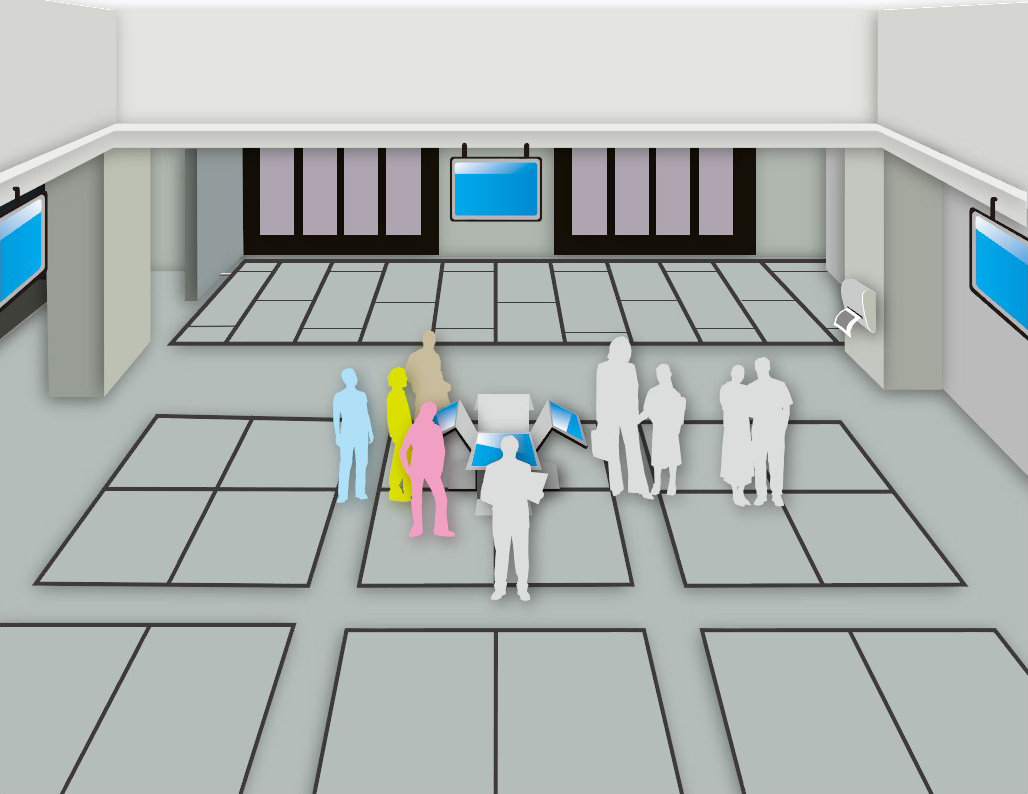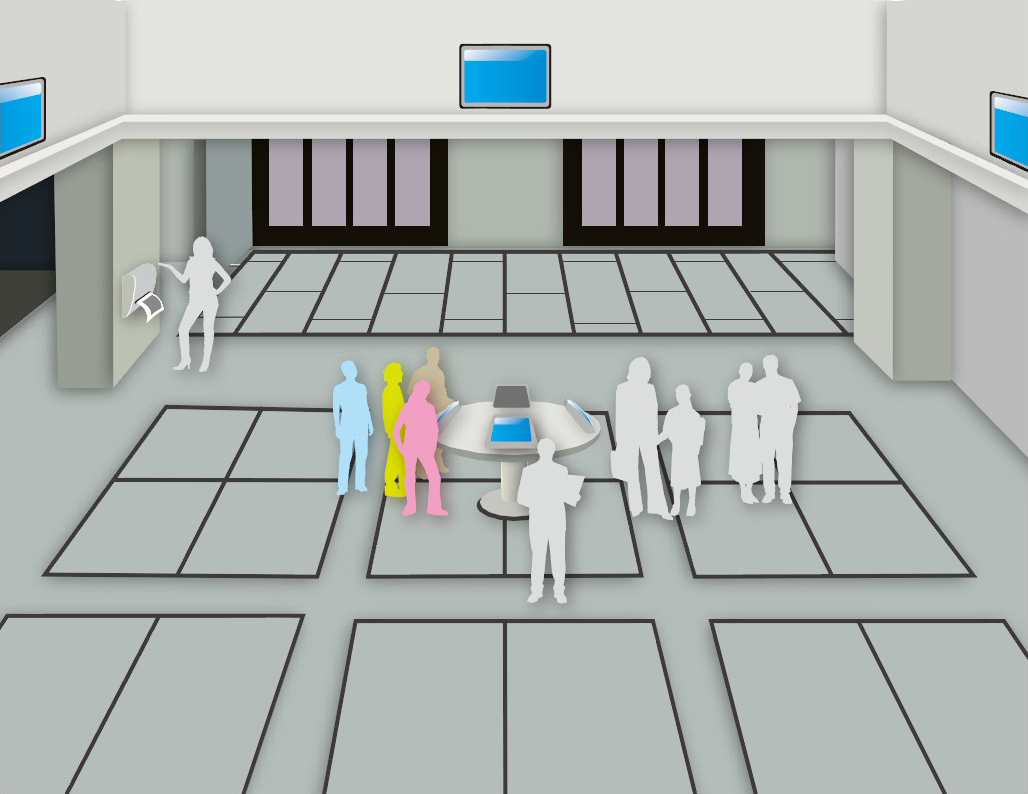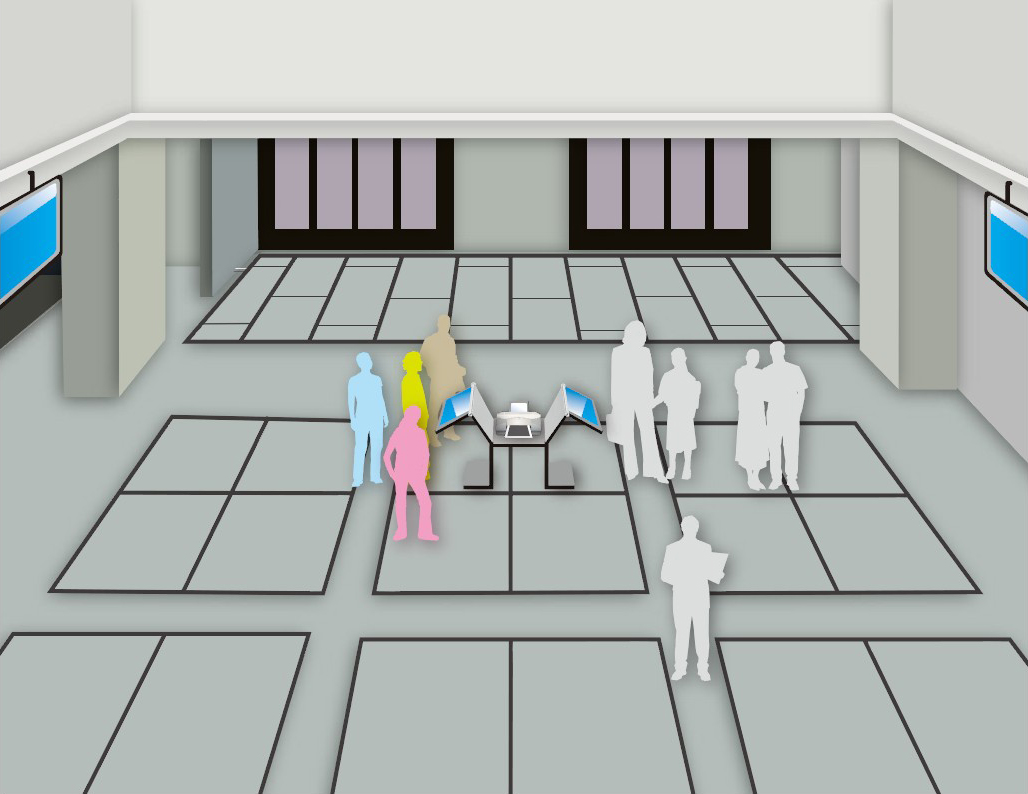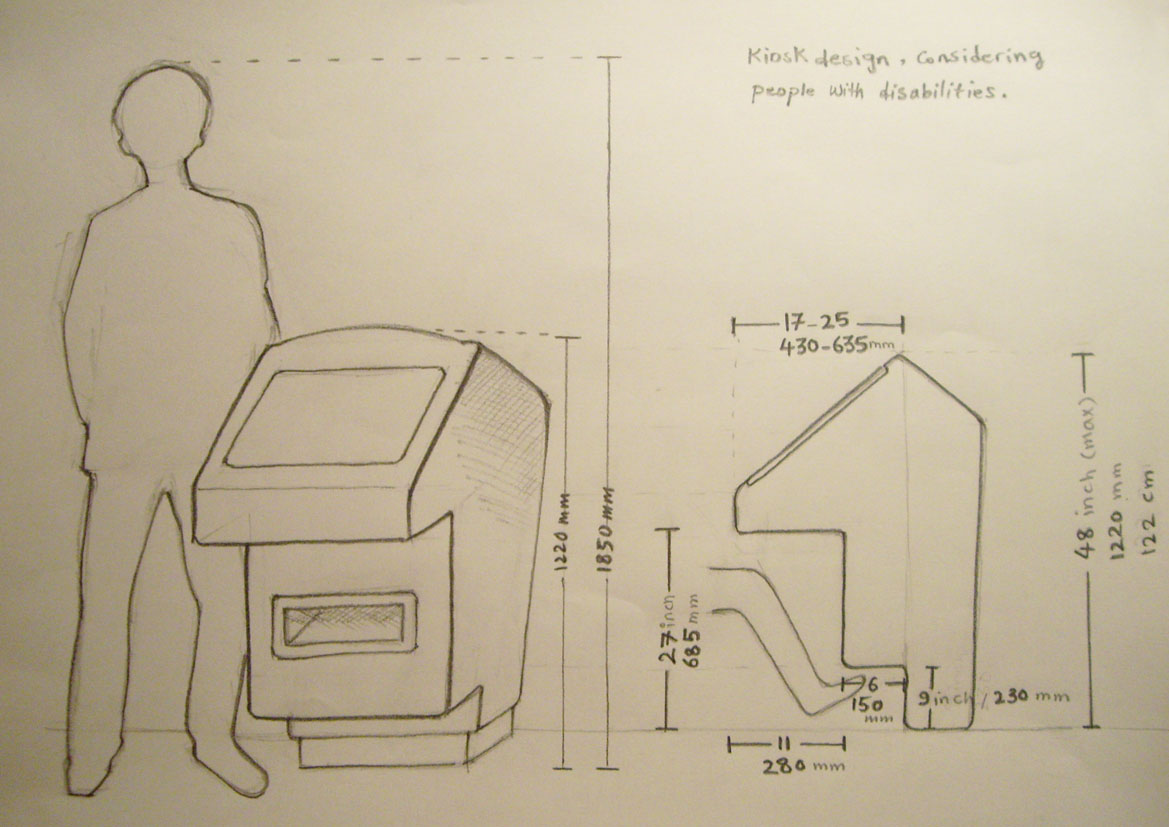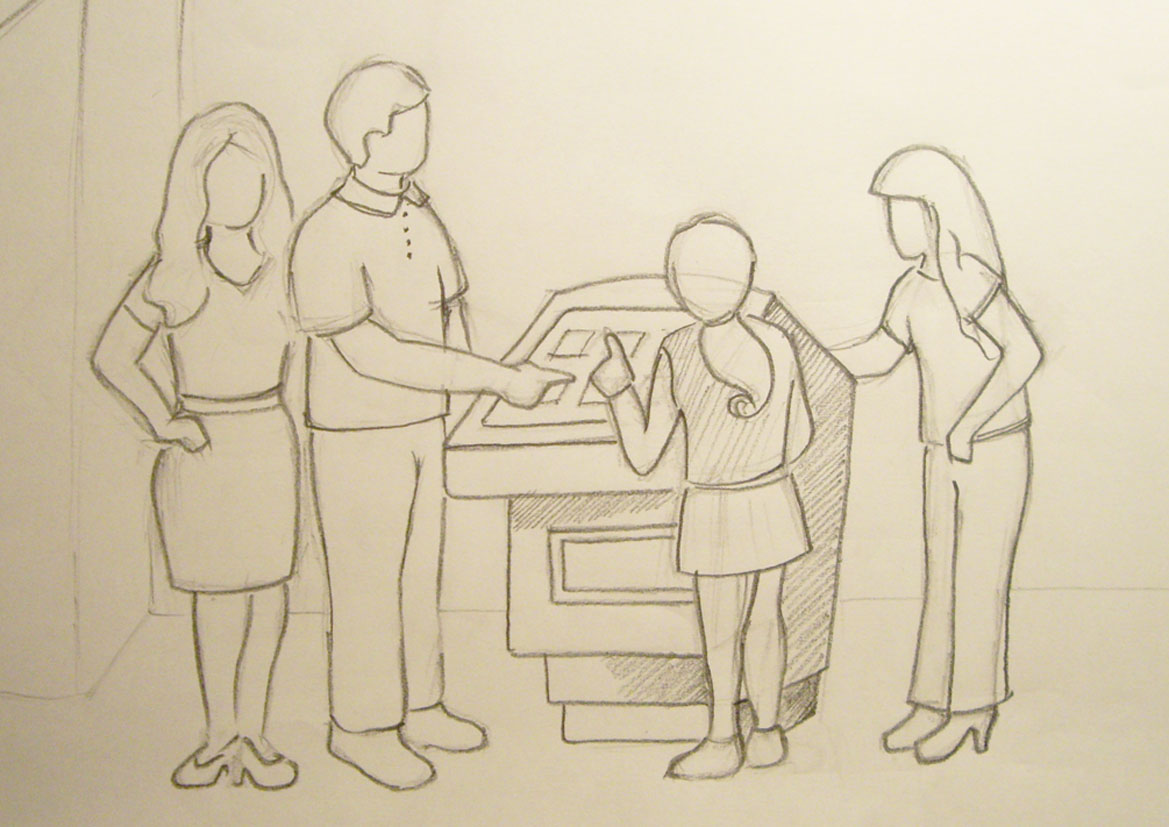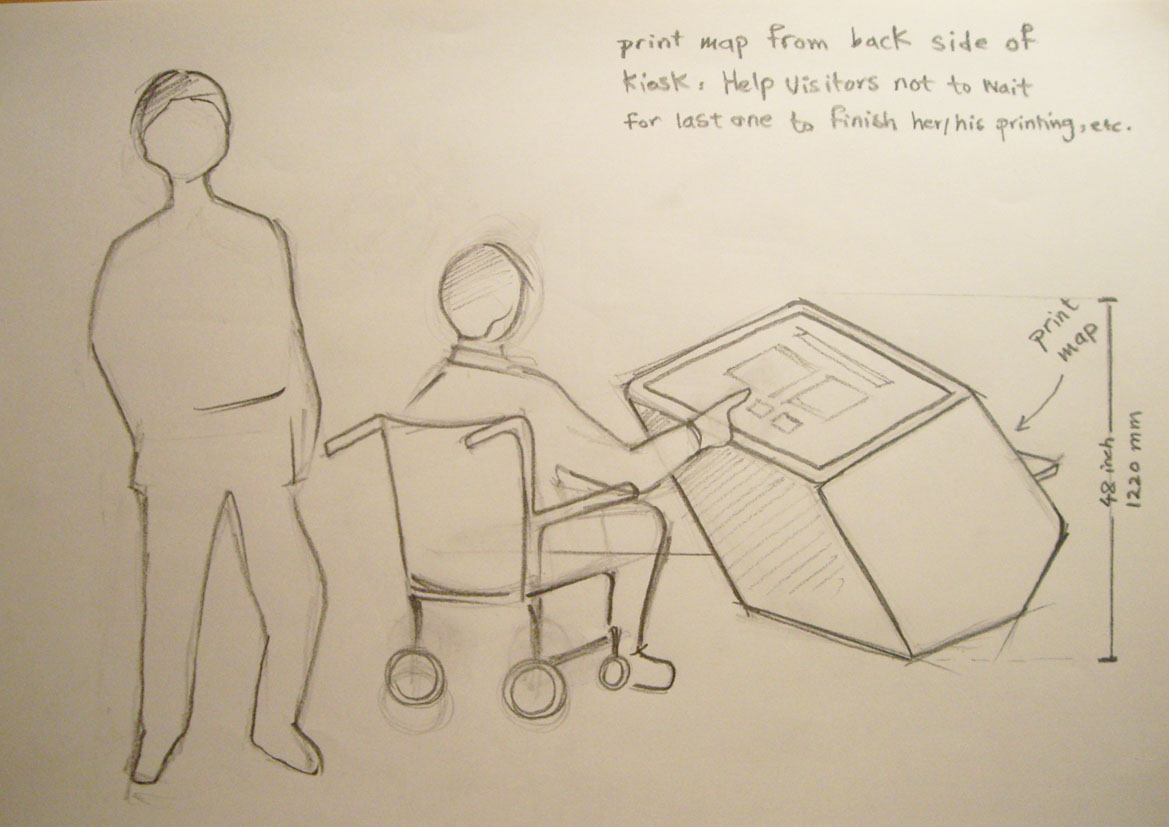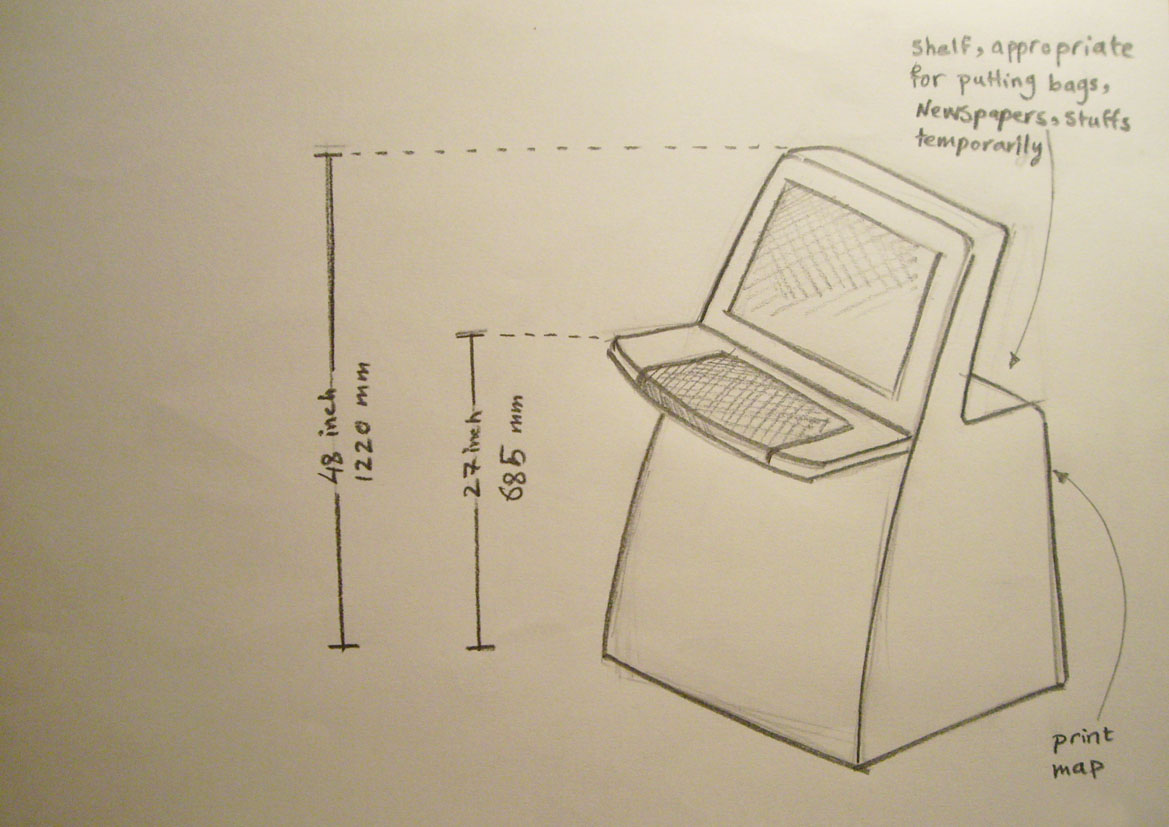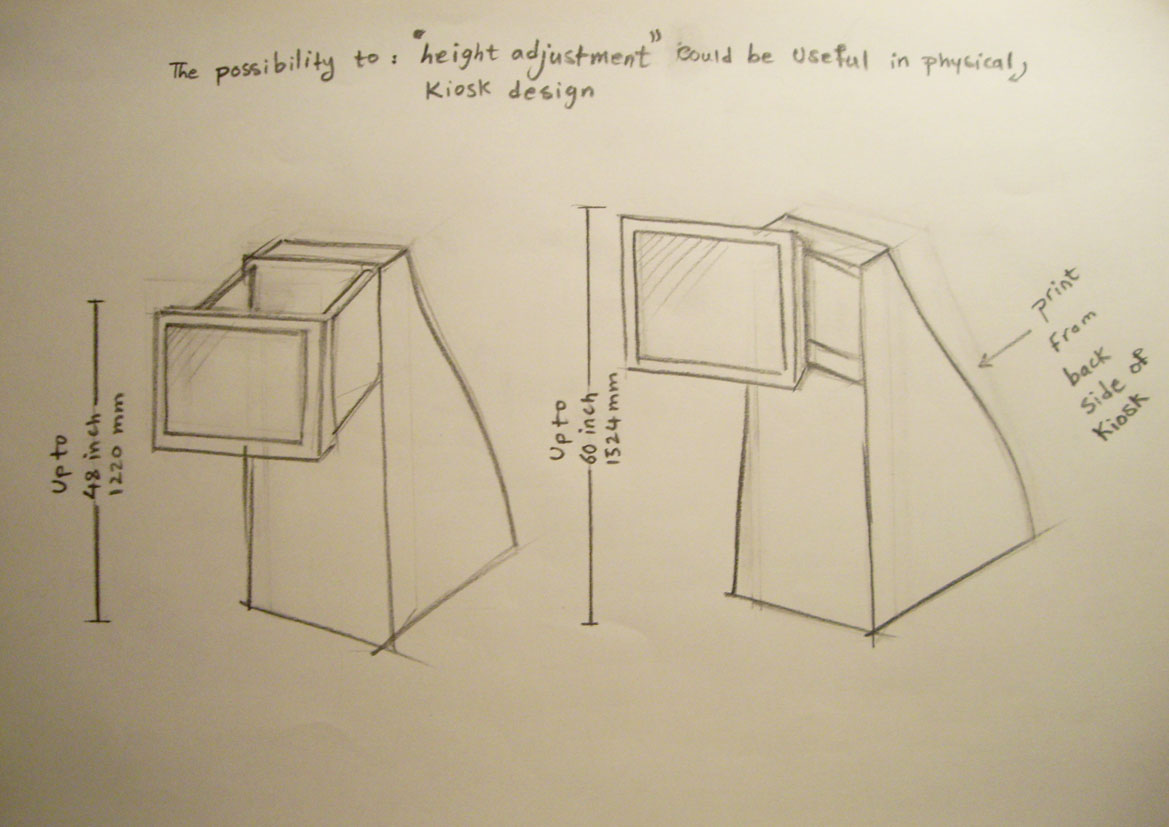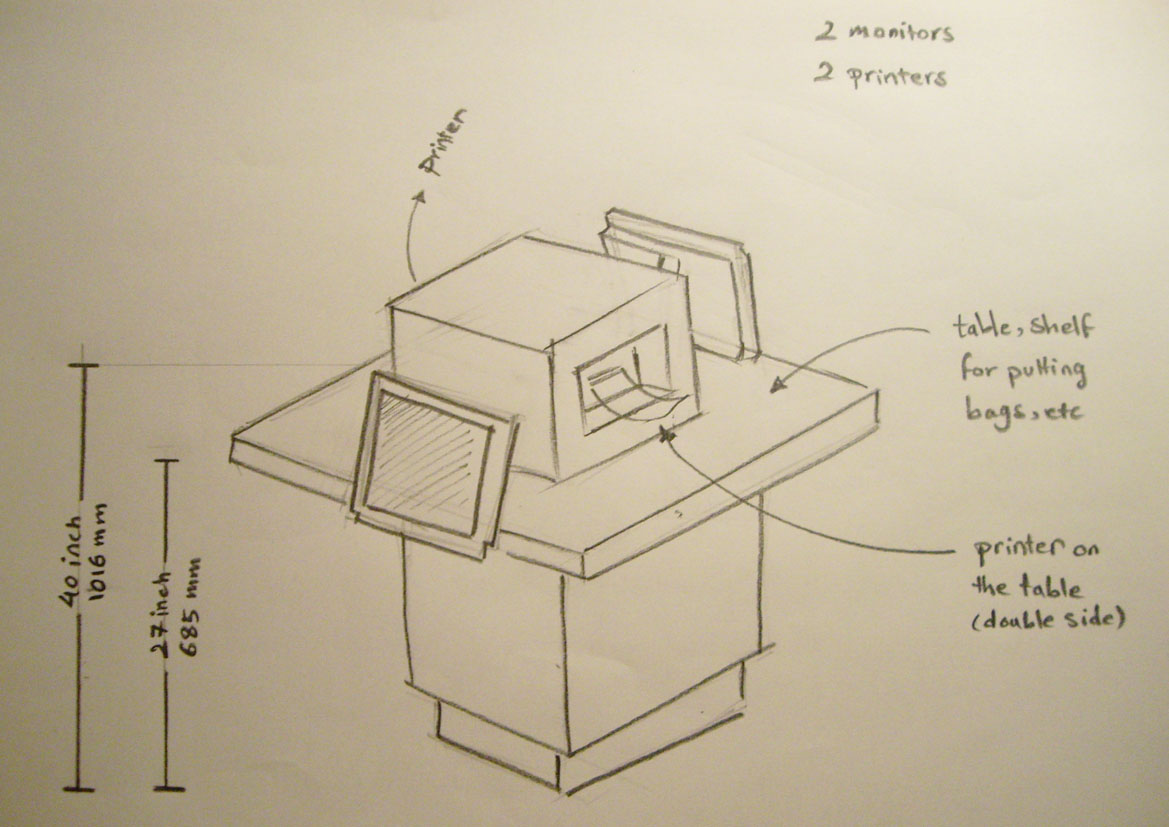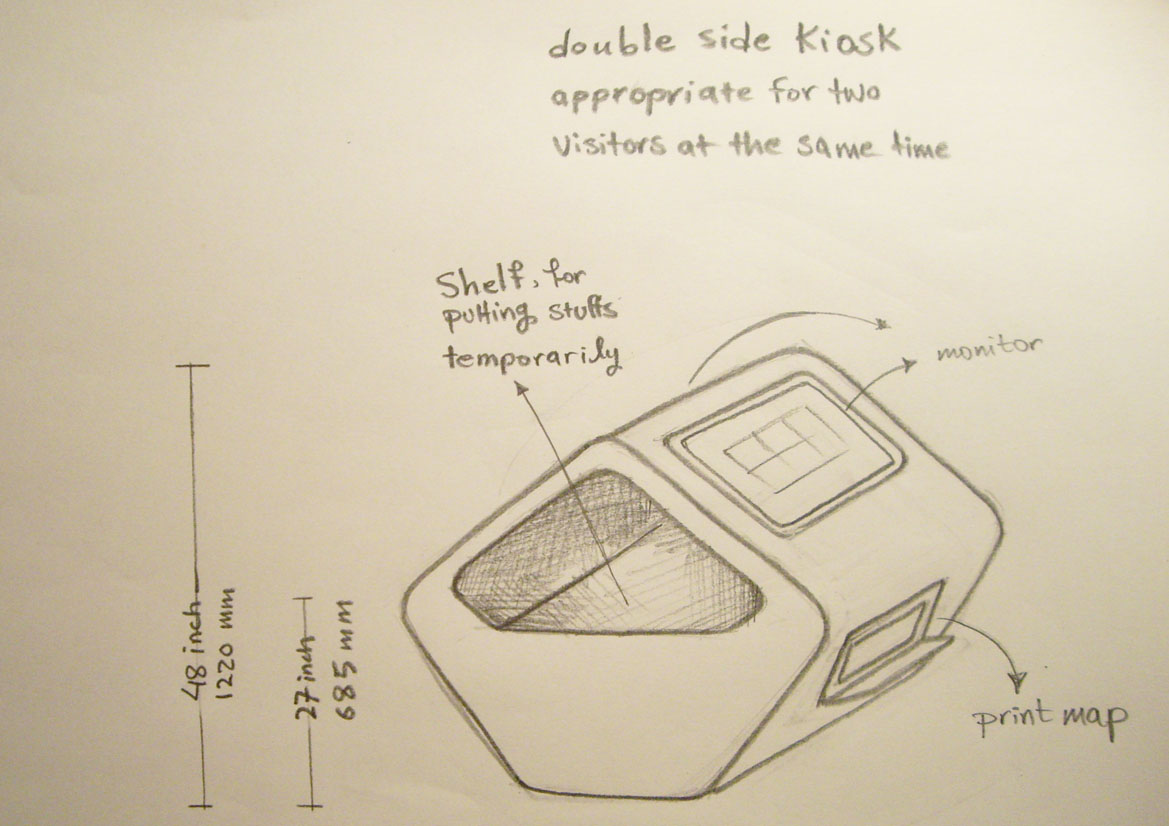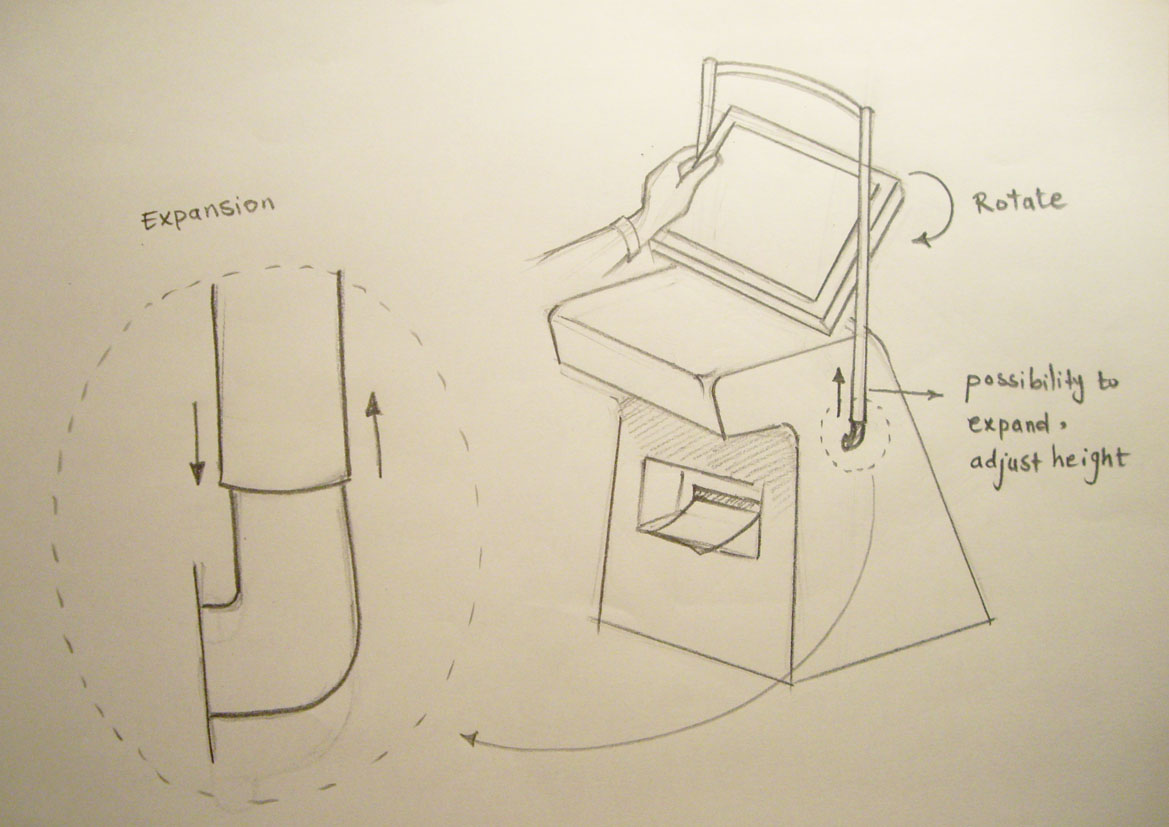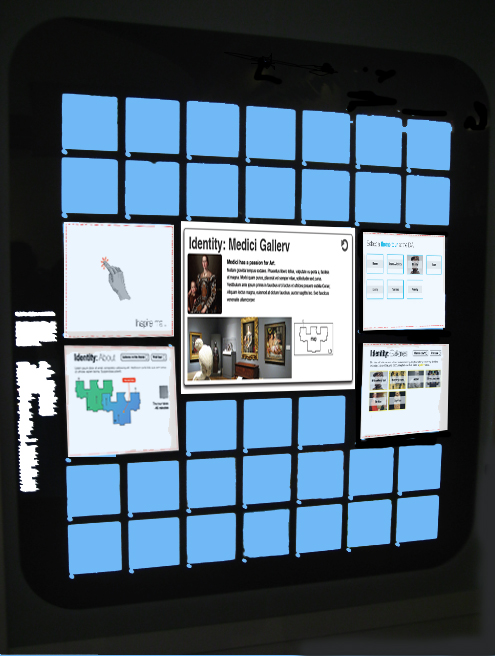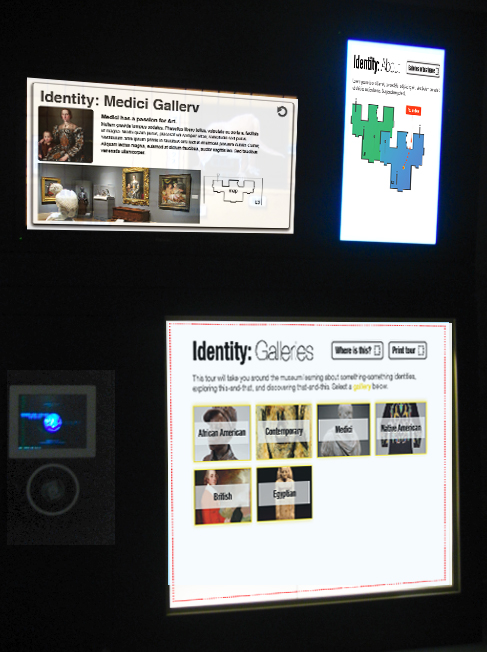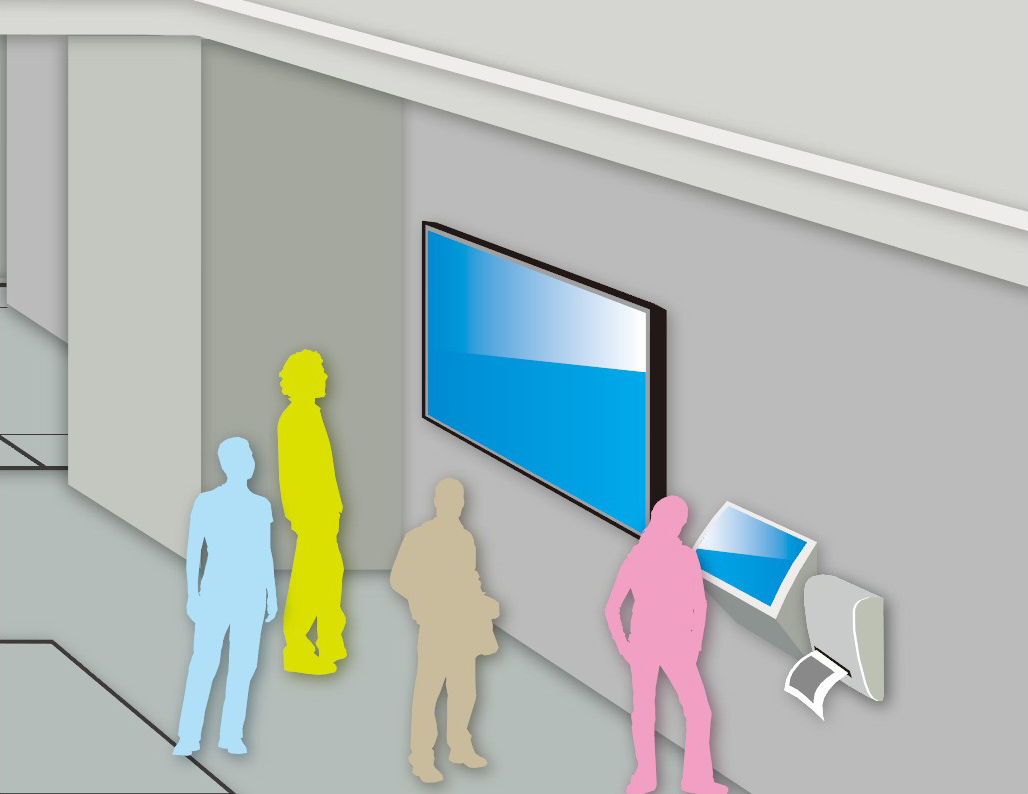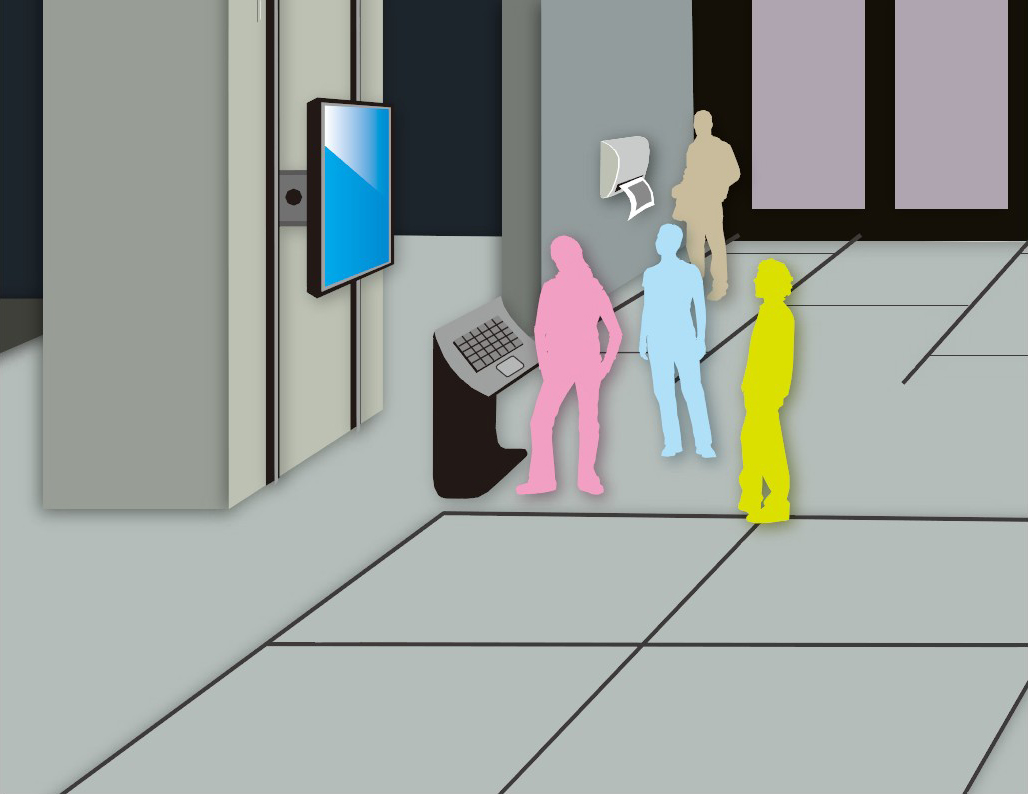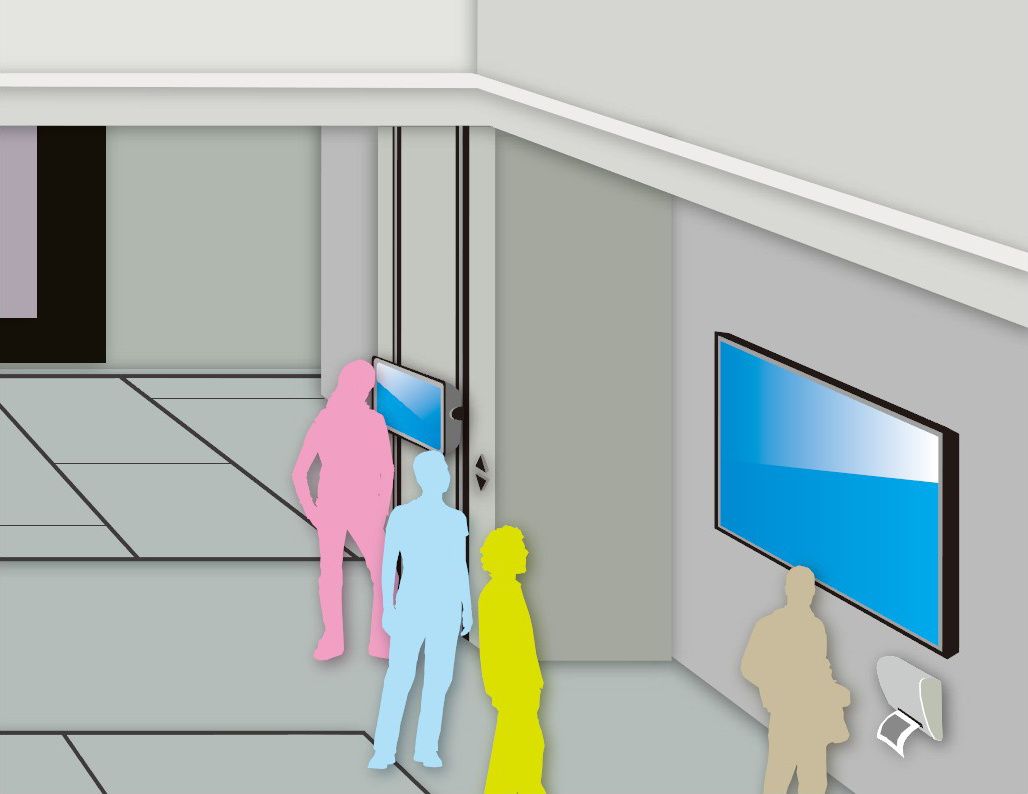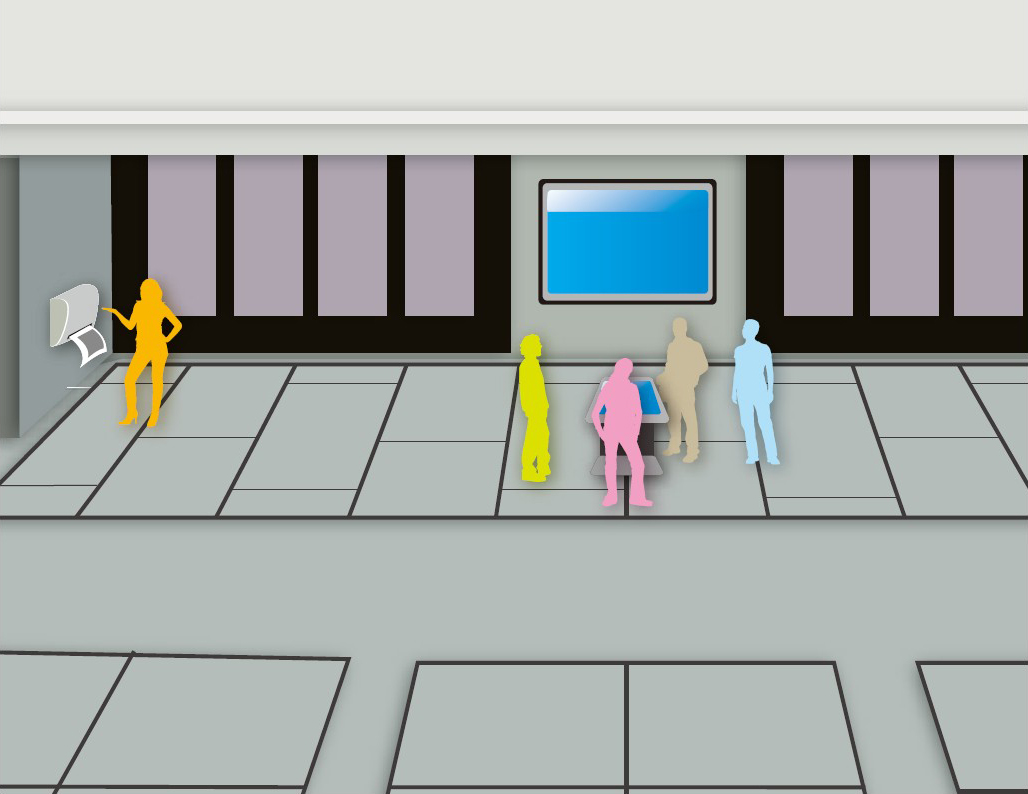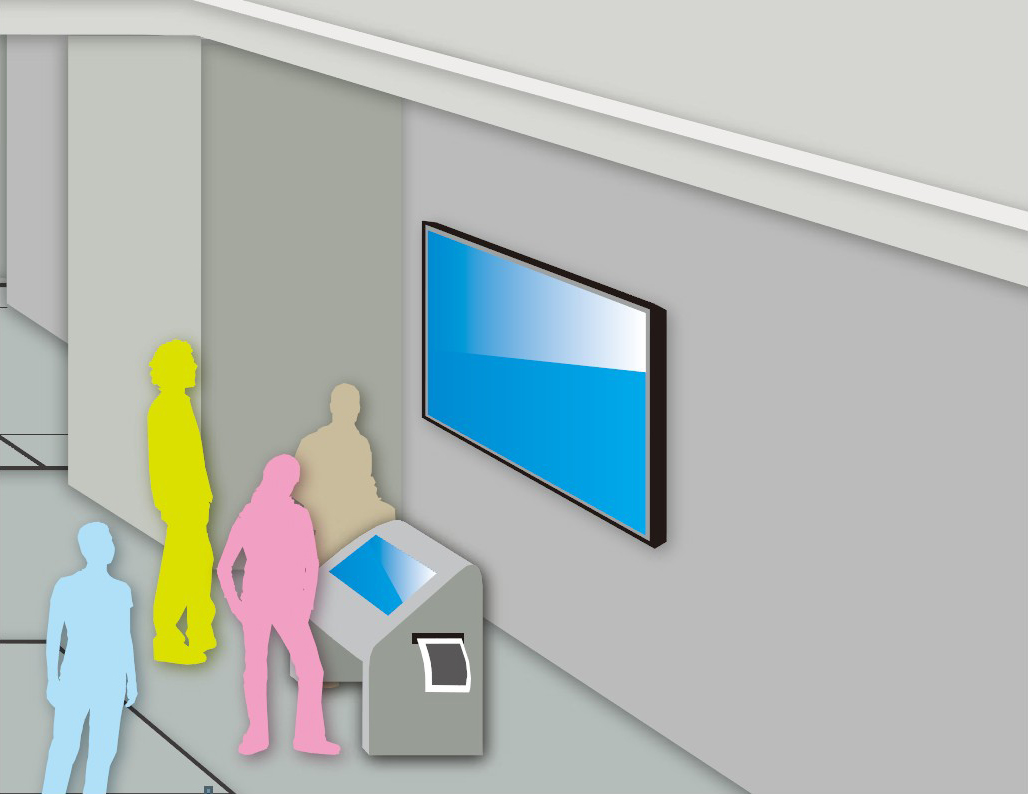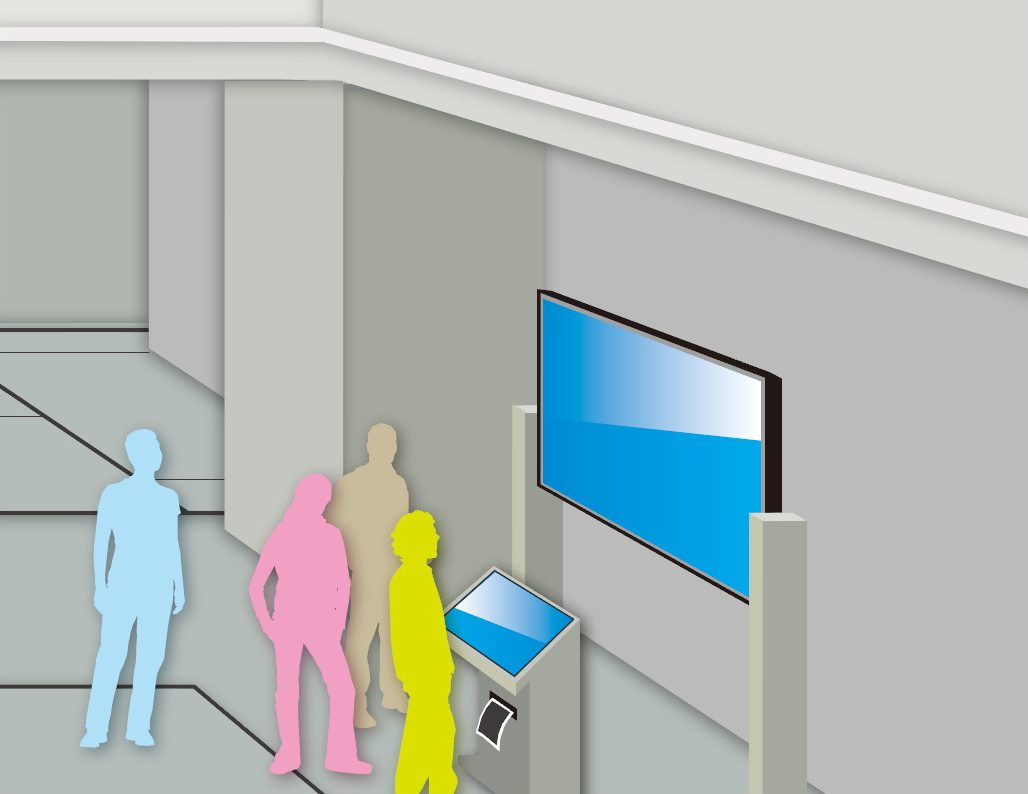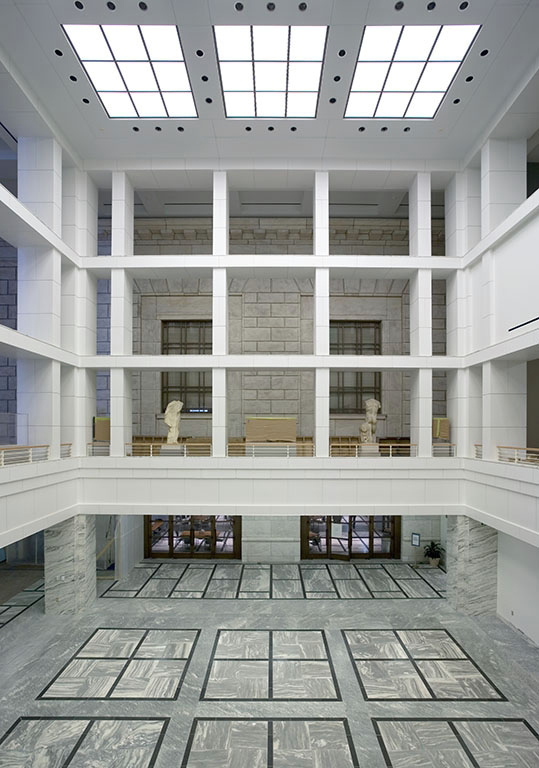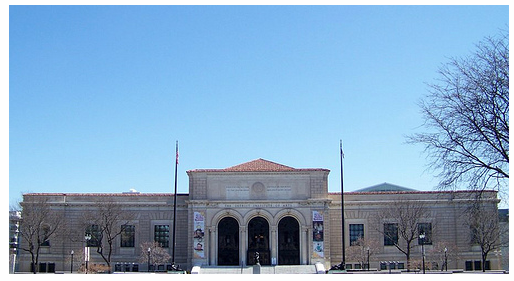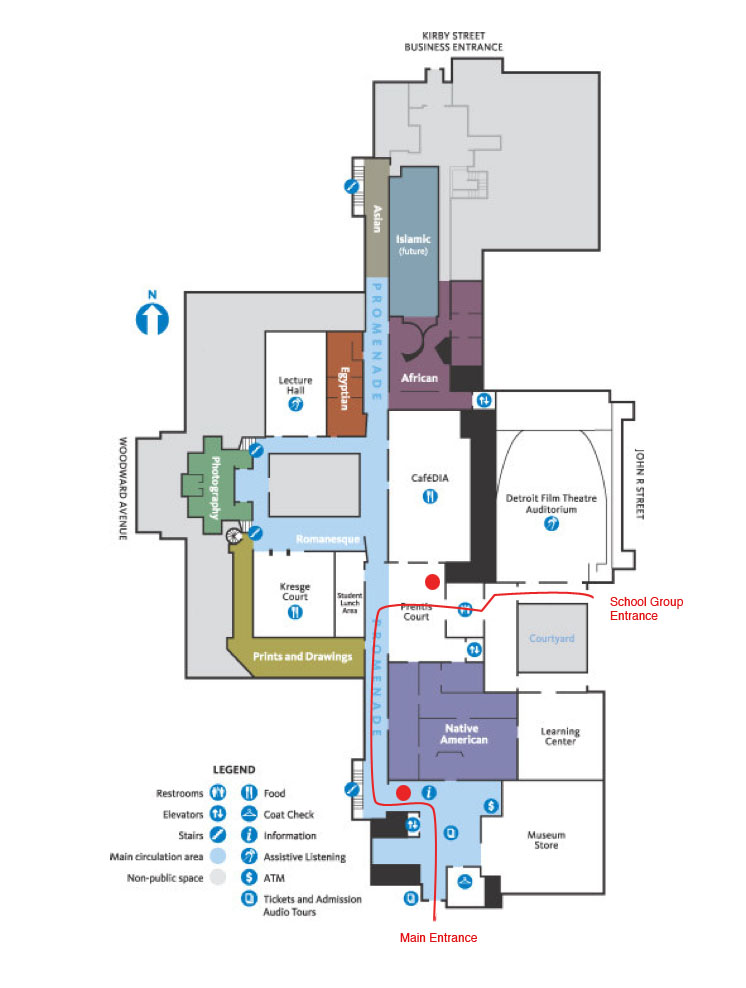Physical kiosk designs in context
On this page we explore examples of physical kiosk designs in context with the physical gallery space and associated user groups as identified in the scenarios listed below, from this wiki page http://wiki.fluidproject.org/display/fluid/Map+tool+overview+and+scenarios
2.2.1 Family Visitors Perspective
A family of 4 (a father, mother, and 2 daughters), go to the Art Gallery on a Sunday for a spontaneous day trip.
Problem: The family has no idea what exhibits are on display at the gallery and would like to know what would be the most relevant/interesting exhibits to see.
2.2.3 Visiting Students Perspective
An 8th grade class visits the local art museum to learn about 19th Century art history. The students are grouped into teams of 4 and are asked to generate a report on a particular artist/work of their preference and to present these findings next week in class.
Problem: A team called the "Photatoes" want to know what exhibits there are that feature 19th century art pieces/artists and where they are in the museum.
2.4.1 Perspective: Adult visitor w/ mobility impairment doing pre-visit planning
If you have a disability, pre-visit planning becomes more important. People with disabilities visit museums: an exploratory study of obstacles and difficulties. See also Clayton's recent notes on museum experience for people w cognitive disabilities
Problem: Visitor needs to know where wheelchair accessible affordances of DIA (e.g. parking, entrances, and elevators) are located, and how to find where the Through African Eyes exhibit is.
Fixed Centre Kiosk
Fixed Centre Kiosk - characteristics include kiosks centrally located in the museum, large groups of people are able to congregate, the intent is to create an environment of social exchange.
In the images to the left and right kiosks are centrally located in a large museum lobby. On the left 4 individual kiosks are joined in a circle. On the right 4 LCD screens rest on an oval table. The printer is attached to the wall and prints out brochures.
In the images to the left and right kiosks are centrally located in a large museum lobby. On the left 1 large kiosk stands waist high with a large screen overhead, printer is attached to the wall and prints out brochures. On the right 2 adjustable LCD screens accross from each other, have the printer resting between them. .
Moveable Kiosk
Movable Kiosks - characteristics include kiosks that are self-contained, we considered as sculptural objects, and can be moved to different locations in the museum.
All the 8 sketches identify different aspects of moveable kiosks.
Fixed Wall Mounted Kiosk
Fixed Wall Mounted - characteristics include LCD screens mounted into a wall and interface is shared between many screens. The kiosk is seen more as an artwork or installation in the museum.
In the images to the left and right are examples of wall mounted kiosks. On the left there are 5 touch screens, the screen in the centre controls the 4 LCD screens on either side. On the right 2 LCD screens rest abouve the main touch screen mounted in the wall. ipod like set of controls sit beside the installation in case you would like to lisiten to the tour you have selected. The printer is attached to the wall and prints out brochures.
Accessibility Solution - MP3 from web site
Selected options
Prentis Court - group entrance
Farnsworth entrance - wheel chair entrance
Map of entrances
Museum Notes
Student Tours
http://www.dia.org/education/student_tours/index.asp
Accessibility
Facilities are wheelchair and stroller-accessible via the Farnsworth entrance; for information, call 313.833.7940 313.833.7940
